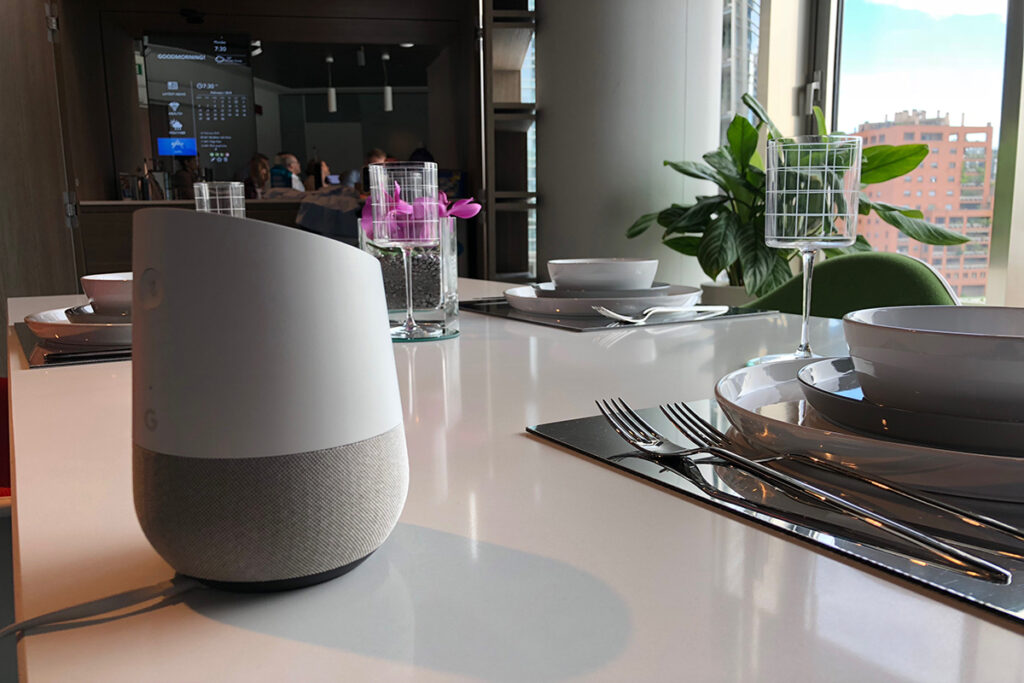“What’s the weather going to be like tomorrow?” “Play a Rolling Stones song” “What meetings do I have today?” These are just some of the most common requests made to smart voice assistants such as Amazon Echo (Alexa) and Google Home.
But we should not forget that Amazon is first and foremost a marketplace. That’s why Alexa is not just a meteorologist, DJ or personal assistant, but also a salesperson. Do smart voice assistants have the potential to revolutionise the world of European retail?
Here, Roger Niederer, Head Merchant Services of SIX Payment Services, give us a much-needed reality check.
Check 1: Does shopping via a Smart voice Assistant have a future?
Shopping using voice commands is already possible, even if it is only used to a relatively modest extent. However, experts predict considerable growth in this sector in the next few years. According to a survey of 1,500 owners of smart voice assistants in the USA by OC&C Strategy Consultants, the US market will expand from its current value of $2 billion to $40 billion in the next five years. Currently, 66 per cent of adult Americans use smart voice assistants or chatbots, 21 per cent even undertake e-commerce tasks such as paying bills and online banking through these devices, as illustrated in a recent study by Mastercard and retailer Mercator.
Voice shopping, also known as Conversational Commerce, creates a faster, more convenient and seamless consumer shopping experience. Instead of typing and clicking through multiple links, the user asks a question and promptly receives an answer.
Check 2: How will this trend affect European merchants?
Worldwide trends do not go past European countries, although some may hit some countries a little later. Online shopping has been well established for some time and continues to grow with Amazon dominating the sector. According to the German industry association HDE, Amazon already accounts for 40 per cent of all orders placed online in Germany with the Amazon “Marketplace” particularly popular with merchants. As the trend towards extended use of smart voice assistants continues, Amazon will continue to expand its leading role in online retail. This should be of particular interest keep to merchants when they consider their online strategies for the next few years.
Check 3: Is competition distortion pre-programmed?
The problem with buying goods using voice commands is the final product selection. If, for example, a customer searches for cleaning detergents in a traditional online shop, they will be shown a wide variety of products to choose from. But how do Alexa, Siri & others deal with a request to “order detergent”? Below are two suggestions for merchants to consider in order to remain competitive and relevant:
- Voice requests tend to be longer than typed enquiries. For example, a customer types ‘shoe shops near me’ into Google, but when making the same request by voice command, the enquiry might be ‘Which shoe shops are open now in the city center of Hamburg?”. It is this crucial difference that merchants must understand in order to reconcile business, product and payment information to the new way that consumers search for goods.
- To date, Amazon, Google and others have developed more than 15,000 so-called ‘skills’ apps that can be accessed using smart voice assistants. What initially served as a means of contacting customers and answering their questions has moved on and outgrown a pure customer service initiative. Banks and financial institutions are currently working to provide personalised services that make payment processes even easier, faster and more convenient than sending a message online. American Express, Capital One and US Bank have developed skills for Alexa, while Barclays, ICICI, ING and OCBC are working on systems using Apple Siri.
Conclusion: Comfort is trendy
New technologies always succeed when they make life easier for us. Smart voice assistants have the potential to significantly influence consumer purchasing behaviour. For online merchants, this is both an opportunity and a challenge. Merchants can differentiate themselves from the competition with compelling offers, but they must also provide the necessary technical support and a selection of convenient payment options supported by the right payment service partner.
When the processes in the back office are efficient and reliable, merchants will have the time to focus on what is really important – creating a seamless shopping experience for the customer across all their sales channels.








One Response
The other purposes it’s great, but for eCommerce, I think it’s a fad.
Does anyone remember how annoying voicemail was before Visual Voicemail on the iPhone?
Having to wade through options or talk to the system to skip, delete, save etc.